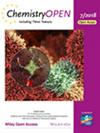Silver-Catalyzed Decarboxylative Coupling of Oxamic Acids with Styrenes to Synthesize E-Cinnamamides: A Distinguish Reaction Pathway.
IF 2.5
4区 化学
Q2 CHEMISTRY, MULTIDISCIPLINARY
引用次数: 0
Abstract
A silver-catalyzed decarboxylative coupling of oxamic acids with styrenes has been developed to produce E-cinnamamides. Oxamic acids act as efficient precursors for carbamoy radicals. Based on the mechanistic experiments and intermediate analysis, the proposed mechanism involves radical addition to styrenes, followed by oxidation and solvent participation, ultimately leading to the formation of cinnamamides which is different from the reported cases.
银催化肟酸与苯乙烯脱羧偶联合成e -肉桂酰胺:一个独特的反应途径。
研究了一种银催化的肟酸与苯乙烯脱羧偶联反应制备e -肉桂酰胺。肟酸是碳氧基自由基的有效前体。通过机理实验和中间体分析,本文提出的反应机理是苯乙烯自由基加成,氧化和溶剂参与,最终生成肉桂酰胺,这与文献报道的情况不同。
本文章由计算机程序翻译,如有差异,请以英文原文为准。
求助全文
约1分钟内获得全文
求助全文
来源期刊

ChemistryOpen
CHEMISTRY, MULTIDISCIPLINARY-
CiteScore
4.80
自引率
4.30%
发文量
143
审稿时长
1 months
期刊介绍:
ChemistryOpen is a multidisciplinary, gold-road open-access, international forum for the publication of outstanding Reviews, Full Papers, and Communications from all areas of chemistry and related fields. It is co-owned by 16 continental European Chemical Societies, who have banded together in the alliance called ChemPubSoc Europe for the purpose of publishing high-quality journals in the field of chemistry and its border disciplines. As some of the governments of the countries represented in ChemPubSoc Europe have strongly recommended that the research conducted with their funding is freely accessible for all readers (Open Access), ChemPubSoc Europe was concerned that no journal for which the ethical standards were monitored by a chemical society was available for such papers. ChemistryOpen fills this gap.
 求助内容:
求助内容: 应助结果提醒方式:
应助结果提醒方式:


